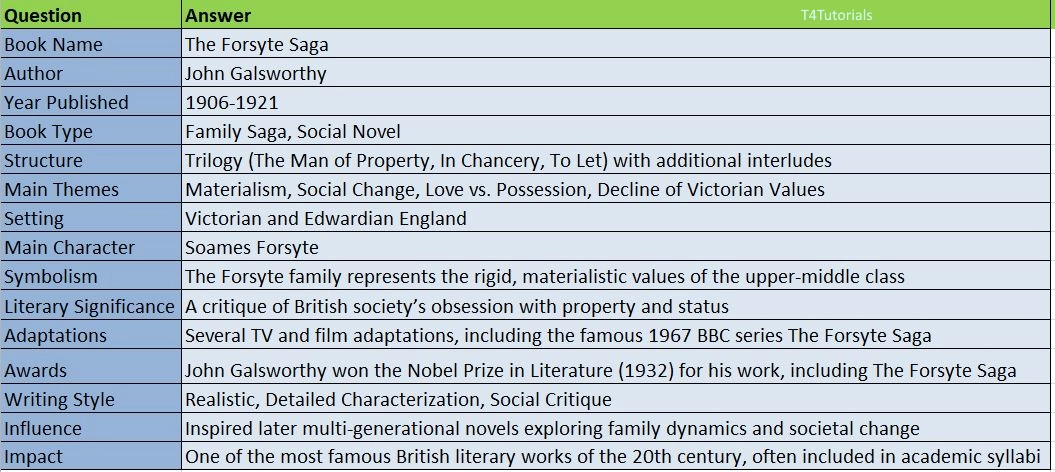Summary:
The Forsyte Saga by John Galsworthy is a trilogy that explores the lives, values, and conflicts of the wealthy Forsyte family in Victorian and Edwardian England. The novels—The Man of Property, In Chancery, and To Let—examine themes of materialism, social change, love, and personal freedom. The saga primarily follows Soames Forsyte, a possessive and wealthy solicitor, and his troubled marriage to Irene Heron, a woman who desires freedom and true love. Their relationship leads to conflicts, heartbreak, and generational struggles. The next two books depict the impact of their decisions on their children and extended family, highlighting the decline of traditional Victorian values and the rise of modernism in Britain. Through detailed character studies, Galsworthy critiques the rigid class system, greed, and emotional repression of the English upper-middle class, making The Forsyte Saga a compelling social commentary on the changing face of Britain.
10
Score: 0
Attempted: 0/10
Subscribe
| Question | Answer |
| Book Name | The Forsyte Saga |
| Author | John Galsworthy |
| Year Published | 1906-1921 |
| Book Type | Family Saga, Social Novel |
| Structure | Trilogy (The Man of Property, In Chancery, To Let) with additional interludes |
| Main Themes | Materialism, Social Change, Love vs. Possession, Decline of Victorian Values |
| Setting | Victorian and Edwardian England |
| Main Character | Soames Forsyte |
| Symbolism | The Forsyte family represents the rigid, materialistic values of the upper-middle class |
| Literary Significance | A critique of British society’s obsession with property and status |
| Adaptations | Several TV and film adaptations, including the famous 1967 BBC series The Forsyte Saga |
| Awards | John Galsworthy won the Nobel Prize in Literature (1932) for his work, including The Forsyte Saga |
| Writing Style | Realistic, Detailed Characterization, Social Critique |
| Influence | Inspired later multi-generational novels exploring family dynamics and societal change |
| Impact | One of the most famous British literary works of the 20th century, often included in academic syllabi |